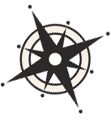Green stormwater infrastructure practices such as rain gardens, green roofs, bioswales, porous pavement, and constructed wetlands hold great promise for reducing urban flooding and increasing water quality. These resources help measure the effectiveness of green infrastructure practices, remove barriers to their implementation, and apply collaborative approaches to design scenarios across a range of scales from individual sites to entire watersheds.
Getting Started

This website provides information to help you learn more about green infrastructure and its benefits, find resources to implement green infrastructure practices, and collaborate with green infrastructure partners across the United States.
Review and Prioritize Green Infrastructure Practices

This tool is designed to help plan green infrastructure solutions to prevent flooding for single buildings or larger neighborhood and community scale efforts. The calculator helps planners, landscape architects, municipal staff, and homeowners explore the value of green infrastructure.

Community-enabled Lifecycle Analysis of Stormwater Infrastructure Costs (CLASIC)
The Water Research Foundation
CLASIC is a screening tool utilizing a lifecycle cost framework to support stormwater infrastructure decisions on extent and combinations of green, hybrid green-gray and gray infrastructure practices.
Explore the Landscape

The MRLC Viewer displays land cover and land condition data from various sources, including land cover and impervious surface data as well as tree canopy cover.

This map displays a variety of data related to Wisconsin’s surface waters, including floodplains, dams, wetlands, and impaired waterways.
Analyze Conditions

The Wisconsin Rainfall Project
Hydroclimate Extremes Research Group, UW-Madison; Wisconsin Initiative on Climate Change Impacts
This map visualizes present-day extreme rainfall statistics and projections of future extreme rainfall statistics.

This resource provides precipitation frequency estimates as well as temporal distributions of heavy rainfall.

This map combines environmental data such as FEMA’s flood hazard layer and current precipitation information with social data like the Social Vulnerability Index and the locations of schools and healthcare providers for the state of Wisconsin.
Engage Communities and Adapt

Tackling Barriers to Green Infrastructure: An Audit of Local Codes and Ordinances
Wisconsin Sea Grant
This workbook helps communities review, revise, and prioritize local codes and ordinances to promote and advance green infrastructure implementation.

This guidebook describes different types of nature-based shoreline techniques suitable for the Great Lakes and shares case studies of their implementation.

Uses of GeoDesign to Guide Green Infrastructure for Urban Stormwater Management
Wisconsin Sea Grant
This site provides a list of tools and resources that can be used to plan and map green infrastructure in a community.
